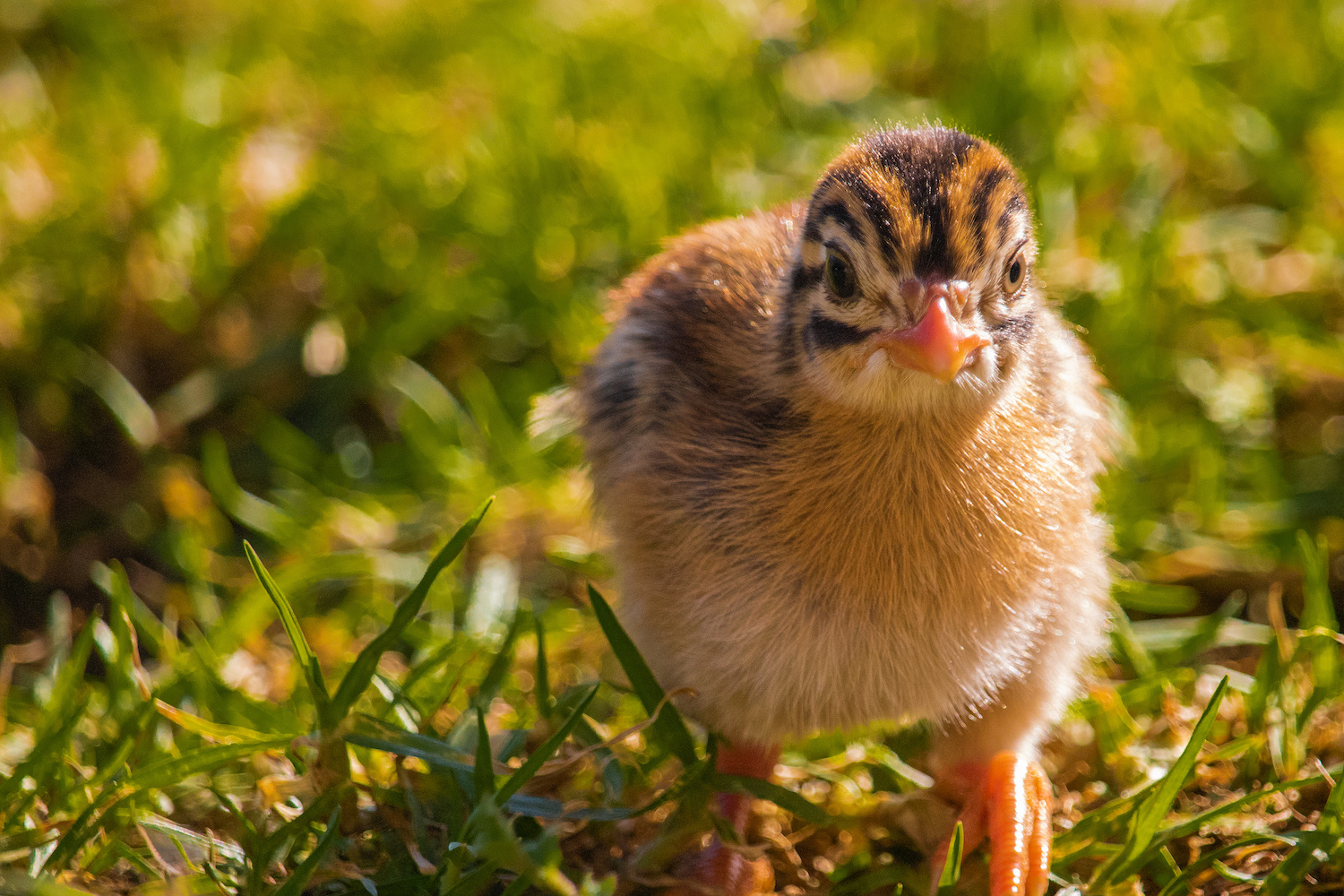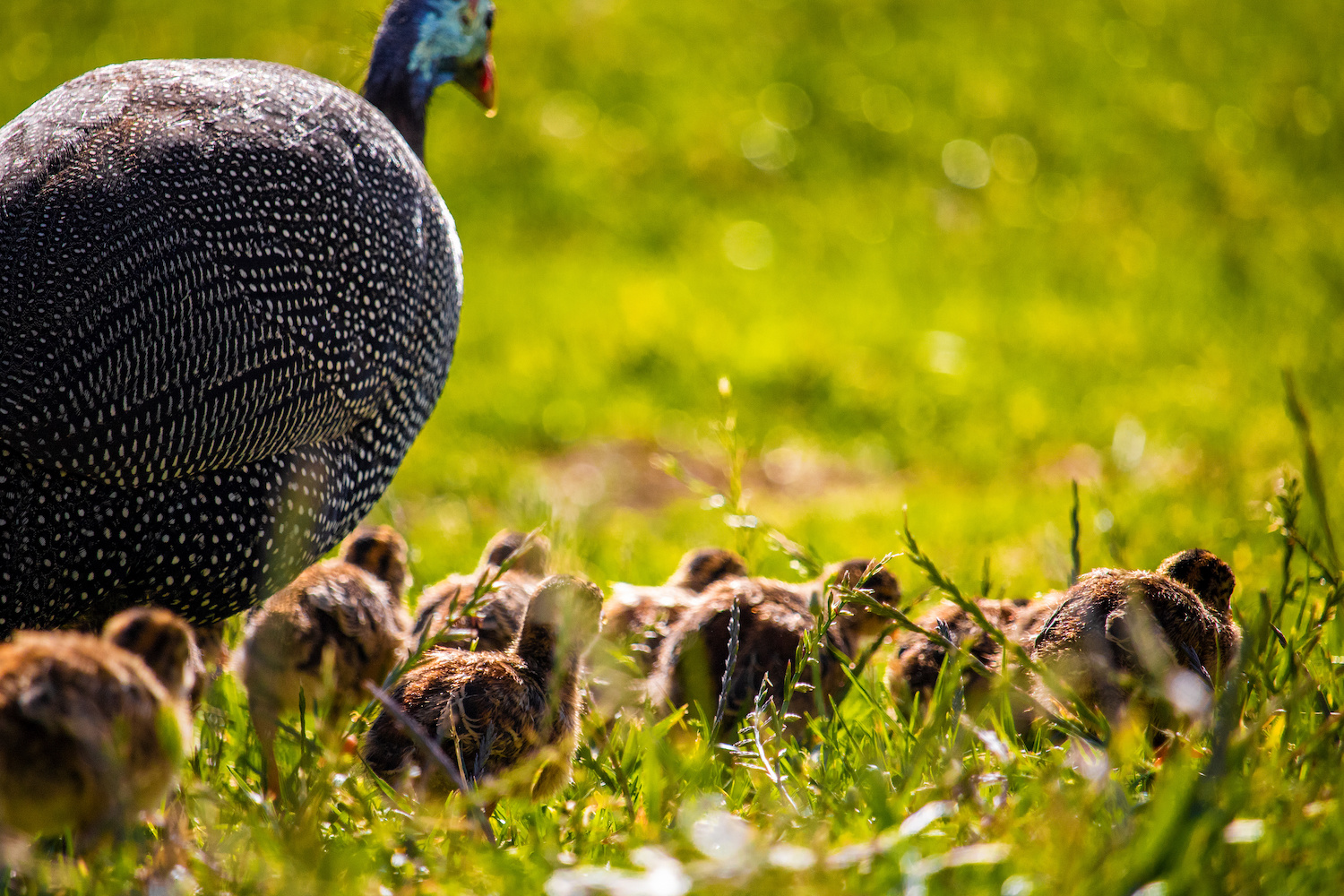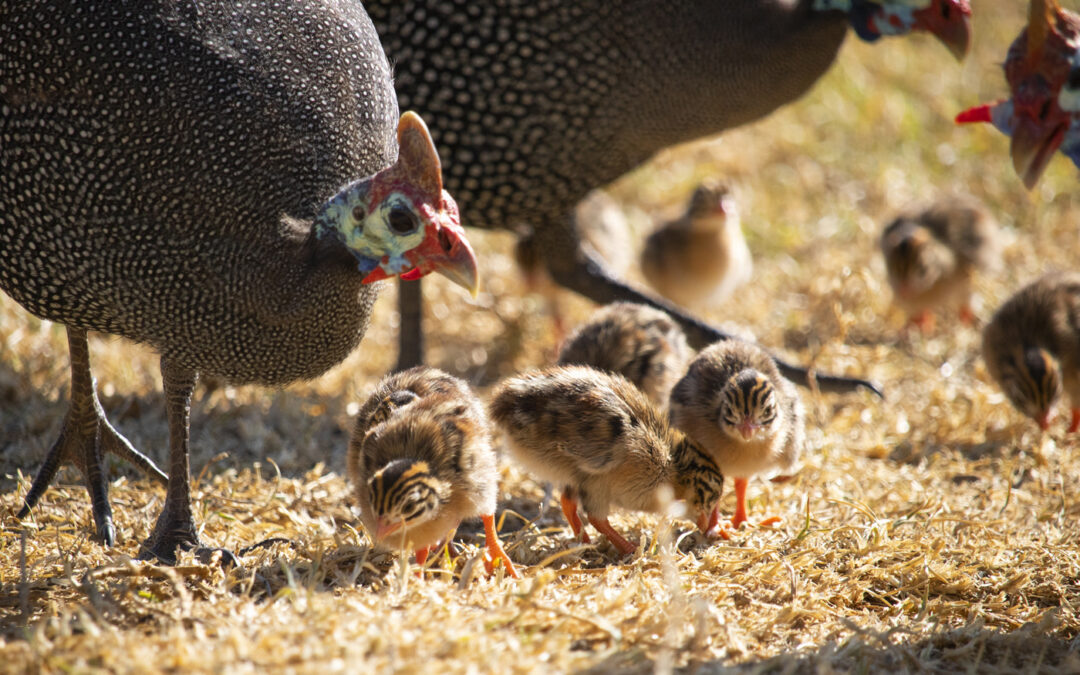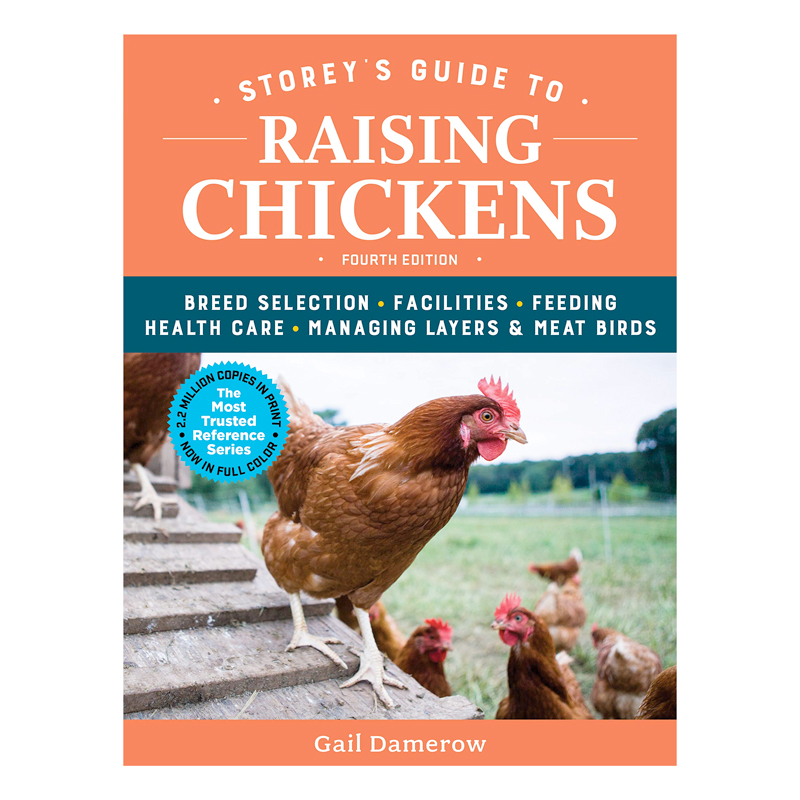Most poultry keepers know how to raise chicks in a brooder. But brooding guinea keets is a little different from brooding chicks. Continuing our interview series with Gail Damerow, poultry expert and best-selling author, we ask her to explain how to brood guinea keets.
What’s the best brooder for guinea keets?
Any type of brooder that’s suitable for chicks is suitable for keets. If you successfully brooded chicks in the past, you can basically use whatever you used before.
It may be something as simple as a cardboard box with a chick feeder and drinker, and a heater. Another option is one of the pre-made brooders, some of which come with all the accessories, so all you need to do is plug in the heater.
Keets start flying as young as two weeks of age, and can knock down a brooder lamp or fly into one and burn themselves. For that reason, a radiant heater such as a Thermo-Brooder or EcoGlow is safer for keets than a standard heat lamp.
For the first few days, cover the brooder floor with paper towels. After that the keets will have learned where the food is and you can use shavings without concern that they will eat them.
Are there any particular difficulties with brooding keets?
Actually, in many ways keets are easier to brood than chicks. They are usually eager and spry from day one. They don’t chill as easily as chicks, and they are less subject to health issues. I would say they’re comparable to brooding bantams, especially when it comes to the drinking water.
What is it about the drinking water?
Like bantam chicks, tiny keets occasionally drown in a regular chick drinker. The easy solution is to put some marbles or clean gravel in the base for the first few days. After that, the keets will be strong enough not to fall into the water.
Another solution is to start with a quail waterer, that has a narrower water basin. Or, if you are planning to have the birds drink from a nipple waterer in the coop, you might start them out with a chick nipple waterer, which doesn’t have any water basin.

What should you feed guinea keets?
If you’re brooding keets along with chicks, you can feed them all the same chick starter. However, if you’re raising the guineas for meat, you can optimize their growth with a higher protein turkey or gamebird starter. Or you could supplement the chick starter with dried meal worms or cooked and mashed eggs.
How much do keets eat?
From day one to six weeks of age, each keet will eat approximately 2½ pounds of starter. Between six and eight weeks of age they will fully feather, at which time they can start foraging on their own. Given the opportunity, they will eat a lot of insects and whatever else they find, cutting down on the amount of commercial feed they eat.
How long do guinea keets need to be in a brooder?
They should stay in the brooder until they fully feather, at six to eight weeks. By then they can fly well, and are pretty good at escaping from the brooder. At that point it’s easier to confine them to a coop.
For the first few weeks after the move, furnish the coop with heat and light. After that open the pophole and let the keets wander in and out as they choose.

At what age can you tell males from females?
Male and female guineas look pretty much alike until they’re nearly mature. Until then, the only way to tell the difference for sure is to listen for the call made by females, starting at about six weeks of age.
The call sounds something like “good luck” or “come back.” Males never make this type of call. Around the time the females start calling, you might notice that the males’ heads become a bit less refined than those of the ladies.
By maturity, males (cocks) and females (hens) differ from one another not only in sound, but also in size, behavior, posture, and headgear. The males are a little bit bigger than the females. They are also more aggressive, and more alert to danger while foraging. On the move, the males hold themselves a little more upright, while the females are more horizontal.
The males’ head knobs, or helmets, are slightly more vertical than the females’ knobs. And the males’ wattles are larger and more deeply cupped. Both make loud alarm sounds, but only females make the characteristic two-syllable call.
Are keets as easy to tame as chicks?
Guineas are a little less trusting than most chicken breeds. The best way to overcome their shyness is to take advantage of imprinting while they’re young. The more time you spend with keets, the more strongly they will bond to you.
Also, I find that raising keets and chicks together helps. As the chicks become more friendly, so will the guinea keets.
Why are baby guinea fowl called “keets”?
The word keet derives from the old Nordic word cytling (keetling), which means a young animal. The most popular guinea fowl are pearl guineas, so called because their gray feathers feature attractive white pearl-like dots.
Pearl keets look quite different from the adults. They have beady black eyes, bright coral beaks and feet, and chipmunk-like two-tone brown stripes down their backs. “Adorable” is the best description for pearl guinea keets.

Gail Damerow has been keeping chickens for nearly 50 years and has written several books about them including Storey’s Guide to Raising Chickens, The Chicken Health Handbook, The Chicken Encyclopedia, Hatching and Brooding Your Own Chicks, and What’s Killing My Chickens. For more about Ms. Damerow, visit her blog at GailDamerow.com.
Gail Damerow’s headshot courtesy of Kathy Shea Mormino.




